-
Seedshop
-
Feminized
Cannabis seeds -
Autoflowering
Cannabis Seeds -
Regular
Cannabis Seeds -
F1 Hybrid
Cannabis Seeds -
CBD
Cannabis Seeds -
Zamnesia
Cannabis Seeds
-
Top 10’s
- Top 10 Feminized Seeds
- Top 10 Autoflowering Seeds
- Top 10 Regular Seeds
- Top 10 USA Cannabis Strains
-
Favourites
- Beginner Strains
- Below 1% THC
- Classic Cannabis Strains
- Cup Winners
- F1 Hybrids
- Fast Flowering Seeds
- High CBD Strains
- High THC Strains
- Mix Packs
- Zamnesia Exclusive Collabs
-
-
Headshop
-
Vaporshop
- Spare Parts & Accessories
- AirVape XS GO (2021)
- Arizer Air MAX
- Arizer Extreme Q
- Arizer Solo 2
- Arizer V-Tower
- Arizer XQ2
- Boundless CFC 2.0 Vaporizer
- Boundless CFX
- Boundless TERA (V3)
- CRAFTY+
- DaVinci IQC
- Dr. Dabber Boost EVO
- DynaVap VapCap "M" PLUS 2023
- DynaVap VonG (i) Titanium
- Flowermate Aura
- Flowermate Cap Pro
- Flowermate Slick
- Flowermate V5.0S Pro
-
Healthshop
-
Smartshop
-
Shroomshop
-
Growshop
-
Seedshop
All CategoriesSeedshop
- Autoflower Seeds
- Feminized Cannabis Seeds
- Zamnesia Seeds
- Zamnesia's Top 10
- CBD Seeds
- F1 Hybrids
- Seed Banks
- Mix Packs
-
Popular Strain Types
- Zamnesia Exclusive Collabs
- Classic Cannabis Strains
- Amnesia Seeds
- Haze Seeds
- Skunk Seeds
- Kush Seeds
- Purple Seeds
- Blueberry Seeds
- Cheese Seeds
- Diesel Seeds
- White Widow Seeds
- Gorilla Seeds
- Northern Lights Seeds
- Granddaddy Purple Seeds
- OG Kush Seeds
- Blue Dream Seeds
- Lemon Haze Seeds
- Bruce Banner Seeds
- Gelato Seeds
- Sour Diesel Seeds
- Jack Herer Seeds
- Girl Scout Cookies Seeds (GSC)
- Wedding Cake Seeds
- Zkittlez Seeds
- Pineapple Express Seeds
- Chemdawg Seeds
- Hindu Kush Seeds
- Mimosa Seeds
- F1 Hybrids
- Mix Packs
- Cup Winners
- Beginner Strains
- High THC Strains
- Fast Flowering Seeds
- Regular Cannabis Seeds
- USA Cannabis Strains
- Cup Winners
- Seedfinder
-
Vaporshop
All CategoriesVaporshop
- Top 10 Vaporizers
- Spare Parts & Accessories
- AirVape XS GO (2021)
- Arizer Air MAX
- Arizer Extreme Q
- Arizer Solo 2
- Arizer V-Tower
- Arizer XQ2
- Boundless CFC 2.0 Vaporizer
- Boundless CFX
- Boundless TERA (V3)
- CRAFTY+
- DaVinci IQC
- Dr. Dabber Boost EVO
- DynaVap VapCap "M" PLUS 2023
- DynaVap VonG (i) Titanium
- Flowermate Aura
- Flowermate Cap Pro
- Flowermate Slick
- Flowermate V5.0S Pro
- G Pen Elite II
- G Pen Micro+
- G Pen Roam
- Hyer Big-E Rig
- MIGHTY+
- PAX Mini
- PAX Plus
- PLENTY
- Puffco Peak Smart Rig
- Puffco Plus
- Storm Vaporizer
- The Proxy (Puffco)
- VOLCANO CLASSIC
- VOLCANO HYBRID
- Vapman 2.0
- Vapman Click
-
Smartshop
All CategoriesSmartshop
- Top 10 Smartshop
- Zamnesia Gift Cards
- After Party
- Aphrodisiacs
- Aromatherapy
- Blue Lotus
- CBD Vape Juice
- Capsule Machines
- Crystals, Gemstones & Minerals
- Dream Herbs
- Drug Tests
- Extracts
- Happy Caps
- Herbal Tea
- Herbs & Seeds
- Incense
- Kanna
- Kratom
- LSA Seeds
- Mescaline Cacti
- Microdosing
- Nootropics
- Relaxing
- Salvia divinorum
- Smart Seeds
- Stimulants
- Supplements
- Tinctures
- Vape Herbs
-
TRIBE
All CategoriesTRIBE
- My Membership
- Spend Gift Points
- TRIBE Sale
- Exclusive products
- Earn Extra Gift Points
-
TRIBE
- Early Access
- Refer a Friend
- Information
-
TRIBE
-
Language
 United States
United States
Wednesday, 07 January and Tuesday, 13 January 2026*
What is liquid culture? The complete beginner's guide
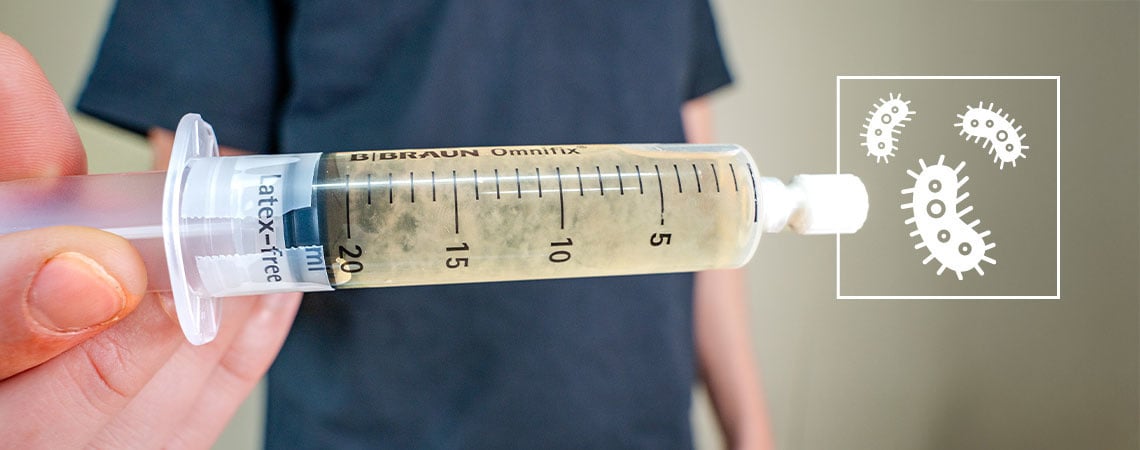
New to mushroom cultivation and curious about liquid cultures? You’re in the right place. Liquid cultures are one of the easiest and most effective tools for inoculating a medium and growing mushrooms.
But how do liquid cultures actually work, and why are they so useful? This guide breaks it down in simple terms, helping you grow faster, cleaner and with better results. Read on and discover why so many growers rely on them.
Understanding liquid culture
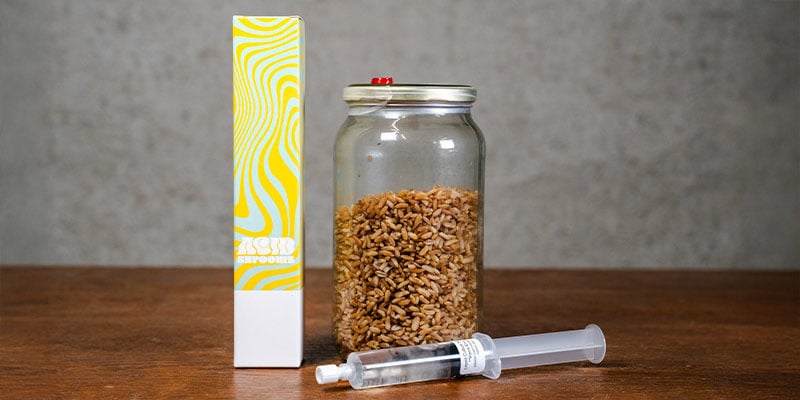
A liquid culture is a nutrient-rich solution used to inoculate mushroom growing medium and cultivate mycelium, the root-like, vegetative structure of fungi. Typically, liquid cultures are made by dissolving simple sugars (like honey, malt extract, or dextrose) in water, then sterilising the resulting solution. Once cool, the mixture is inoculated with a small piece of mycelium.
Over time, the mycelium grows throughout the solution. A healthy, living liquid culture might look cloudy or stringy, which means the mycelium has consumed the sugars it contained and is ready to expand even further throughout whatever medium you inject it into.
Note that liquid cultures aren’t the same as spore syringes, even though they look very similar. A spore syringe, as the name implies, contains spores: microscopic reproductive cells similar to the seeds of plants.
Liquid cultures, on the other hand, contain live mycelium, which is essentially the root system of fungi and the result of successful spore germination. This gives them a major speed advantage when it comes to colonising substrates. Check out our full breakdown of the difference between liquid culture and spore syringes to learn more.
Benefits of using liquid culture
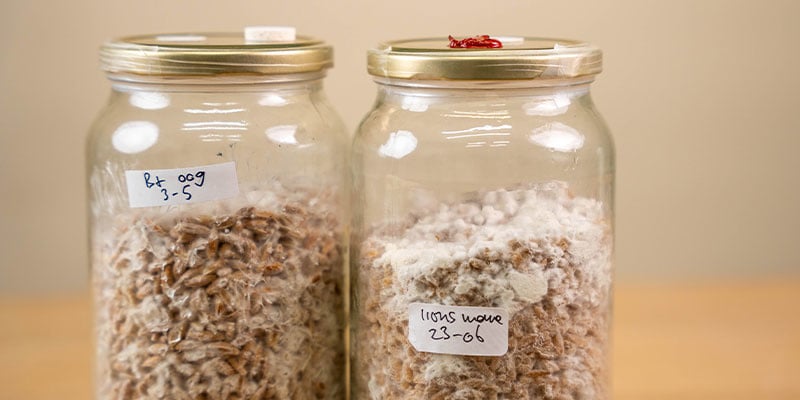
Liquid cultures are very popular among mushroom cultivators, as they have a ton of unique benefits. These include:
- Beginner-friendly: Since liquid culture contains active mycelium, it’s more resistant to contamination, making it easier to use in home environments and providing a slightly greater margin for error. Spore syringes or prints, on the other hand, are much more vulnerable to contamination.
- Faster colonisation: Because liquid cultures contain live and active mycelium, they cut down the time of colonisation considerably. Liquid cultures can colonise a growing medium within 7–14 days, while spores can take 30 days or more.
- Cost-effective: A liquid culture syringe can inoculate multiple substrates. Jars, of course, contain much more liquid culture and are even more productive. You can also expand liquid cultures at home for very little cost.
- Reliable results: Buy a liquid culture from a reputable manufacturer, and from a reliable strain, and expect consistent yields and performance.
- Scalable production: As we alluded to earlier, you can expand liquid cultures at home, allowing you to scale your grows for continuous, consistent harvests that go far beyond what you can get from a single spore print or grow kit.
- Lower contamination risk: Active mycelium is far less vulnerable to common mushroom contaminants, making clean, successful grows much more achievable.
Downsides of liquid culture
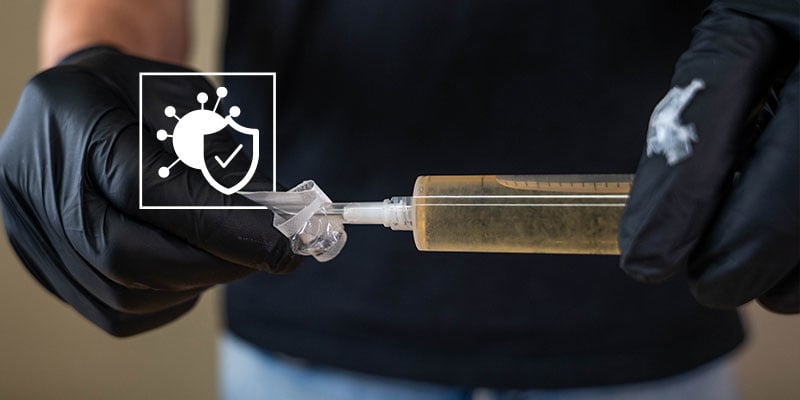
While liquid cultures have many benefits, they also come with a few drawbacks. These include:
- Contamination risk: Sure, liquid culture is more resilient than spores. But it’s not foolproof and can still be contaminated if you don’t follow proper sterile technique. Check out our how to use liquid culture guide to learn more about the risk of invisible bacterial contamination.
- Requires proper gear: The right equipment is key to growing mushrooms, especially when using liquid cultures. Alcohol wipes, flame sterilisation tools, and sterile containers are just some of the equipment you’ll need for a clean, safe, and productive mushroom harvest.
How to store liquid culture properly
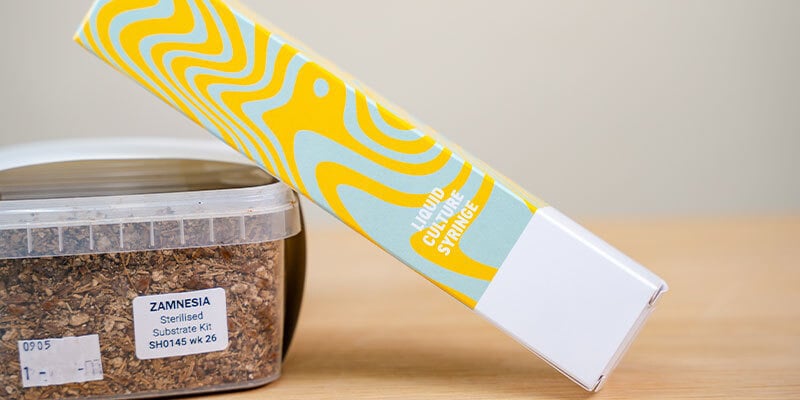
Knowing how to store liquid mushroom culture is key to preserving it for longer periods and minimising the risk of contamination. Luckily, storing liquid culture properly is easy:
- Keep it cool: Store your liquid culture in the fridge at a temperature between 4–8°C. Refrigeration slows down the mycelium’s metabolism, helping preserve its strength for when you want to use it. Cool temperatures also help minimise the growth of bacteria in your culture.
- Use sealed, sterile containers: Whether you’re using syringes or jars for storage, make sure they’re airtight and sterile. Exposing your culture to air or unclean surfaces is one of the fastest ways to introduce contamination. For the best results, store your liquid cultures in their original packaging in the fridge.
- Understand the shelf life of your liquid culture: Asking yourself, "how long do liquid cultures last?" When stored correctly, a magic mushroom liquid culture can stay viable for 2–6 months. However, the mycelium’s strength will decline over time, leading to slower colonisation. Plus, the longer you store a culture, the higher the risk of it becoming contaminated.
Tips to extend the shelf life of your liquid culture
Don't be left guessing how long does liquid culture last: follow these tips to keep your magic mushroom liquid culture fresh for longer:
- Label each culture with the strain and date you prepared or received it.
- Avoid frequent and abrupt temperature changes: store your culture in a consistent cold environment.
- Never reuse syringes or jars unless they’ve been properly sterilised.
- If you’re doubtful about the health of your liquid culture, test a small amount of it on agar or a jar of isolated medium.
The legality of liquid cultures
Magic mushroom growers often wonder, "is liquid culture legal?" In many countries, liquid cultures of legal mushroom varieties, such as gourmet or holistically used species like lion’s mane or reishi, can be freely bought, sold, and used.
Liquid cultures containing the mycelium of Psilocybe cubensis, however, are subject to much more stringent laws. In some parts of the United States, for example, spore syringes (even of Psilocybe mushroom varieties) are legal since they don’t contain psilocybin. Liquid cultures containing live mycelium, however, can contain trace amounts of psilocybin and may be more restricted.
Remember, the laws regarding liquid cultures vary widely, especially when it comes to magic mushroom varieties like Psilocybe cubensis. Make sure to always check the regulations in your area before purchasing, using, or storing any type of magic mushroom liquid culture.
Start growing mushrooms with confidence
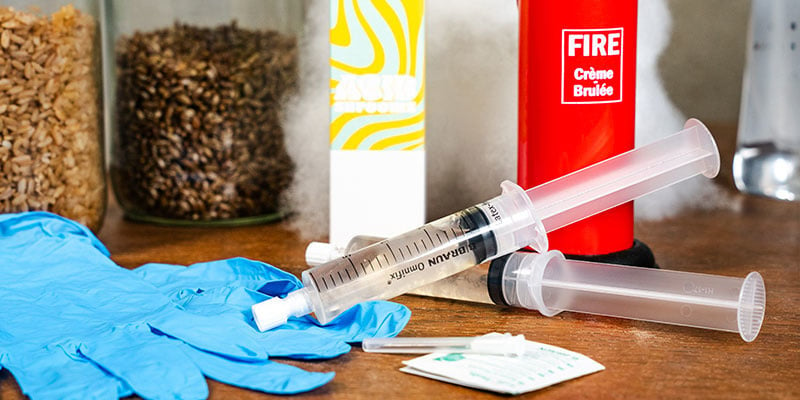
Liquid culture is one of the most valuable tools in modern mushroom cultivation. Fast, efficient, and beginner-friendly, liquid cultures allow you to kickstart your next mushroom grow while minimising contamination.
At Zamnesia, we offer a carefully curated selection of high-quality liquid cultures designed with both beginners and experienced growers in mind. Not only do our pre-made cultures save you time, but they’re made to the highest standards and using only the strongest live mycelium, guaranteeing a fast and productive mushroom harvest every time.
Want to learn more? Check out our full guide on how to use liquid culture for step-by-step instructions and pro tips. Ready to start? Browse our full collection of liquid cultures now and take your first step into the world of mushroom cultivation with Zamnesia by your side.

- France
- Germany
- International
- Italy
- Netherlands
- Polska
- Portugal
- Spain
- United Kingdom
- United States
You might also like
-
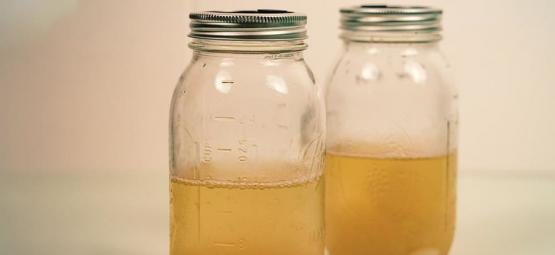
 4 min
29 August 2025
How to make liquid culture
Packed with live mycelium, liquid cultures fast-track home mushroom cultivation and produce bountiful flushes with minimal effort. Best of all, our simple recipe makes creating your own liquid culture ...
4 min
29 August 2025
How to make liquid culture
Packed with live mycelium, liquid cultures fast-track home mushroom cultivation and produce bountiful flushes with minimal effort. Best of all, our simple recipe makes creating your own liquid culture ...
-
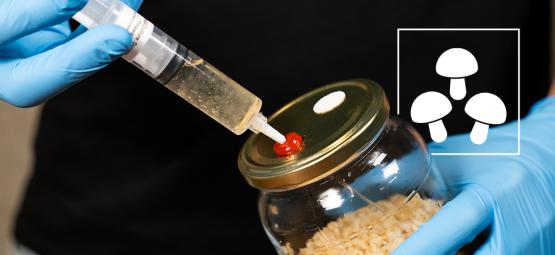
 4 min
25 August 2025
How to use magic mushroom liquid cultures
Liquid cultures are a must-have for anyone growing mushrooms at home. Learn how to use them to produce large flushes of potent mushrooms in express time! ...
4 min
25 August 2025
How to use magic mushroom liquid cultures
Liquid cultures are a must-have for anyone growing mushrooms at home. Learn how to use them to produce large flushes of potent mushrooms in express time! ...
-
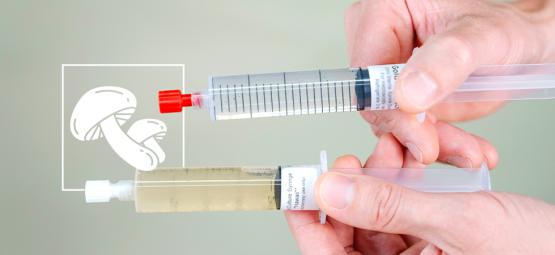
 3 min
11 August 2023
Liquid Culture Syringes Vs Spore Syringes: A Comparison
Fancy yourself a budding mushroom cultivator? If so, you need to know the differences between spore syringes and liquid culture. In this comprehensive guide, we clear up any misinformation surrounding ...
3 min
11 August 2023
Liquid Culture Syringes Vs Spore Syringes: A Comparison
Fancy yourself a budding mushroom cultivator? If so, you need to know the differences between spore syringes and liquid culture. In this comprehensive guide, we clear up any misinformation surrounding ...
Categories
-
Seedshop
- Feminized Cannabis Seeds
- Autoflower Seeds
- Regular Cannabis Seeds
- F1 Hybrids
- CBD Seeds
- Zamnesia Seeds
- Top 10 Autoflowering Seeds
- Top 10 Regular Seeds
- Top 10 USA Cannabis Strains
- Top 10 Feminized Seeds
- Beginner Strains
- Below 1% THC
- Classic Cannabis Strains
- Cup Winners
- F1 Hybrids
- Fast Flowering Seeds
- High CBD Strains
- High THC Strains
- Mix Packs
- Zamnesia Exclusive Collabs
- Amnesia Seeds
- Blueberry Seeds
- Cheese Seeds
- Diesel Seeds
- Gorilla Seeds
- Haze Seeds
- Kush Seeds
- Purple Seeds
- Skunk Seeds
- White Widow Seeds
- Northern Lights Seeds
- Granddaddy Purple Seeds
- OG Kush Seeds
- Blue Dream Seeds
- Lemon Haze Seeds
- Bruce Banner Seeds
- Gelato Seeds
- Sour Diesel Seeds
- Jack Herer Seeds
- Girl Scout Cookies Seeds (GSC)
- Wedding Cake Seeds
- Zkittlez Seeds
- Pineapple Express Seeds
- Chemdawg Seeds
- Hindu Kush Seeds
- Mimosa Seeds
- Zamnesia Seeds
- ACE Seeds
- Advanced Seeds
- Afghan Seed Connection
- Amsterdam Genetics
- Anesia Seeds
- Auto Seeds
- Barney's Farm
- Big Buddha Seeds
- Blimburn Seeds
- Bomb Seeds
- BSB Genetics
- BSF Seeds
- Buddha Seeds
- The Cali Connection Seeds
- CBD Seeds
- Compound Genetics
- Cookies Seed Bank
- Delicious Seeds
- DNA Genetics
- Doctor's Choice
- Dr. Underground
- Dutch Passion
- Elite Seeds
- Eva Seeds
- Exotic Seed
- Expert Seeds
- FastBuds
- Female Seeds
- French Touch Seeds
- Garden of Green
- GeneSeeds
- Genehtik Seeds
- G13 Labs
- Grass-O-Matic
- Greenhouse Seeds
- Growers Choice
- Humboldt Seed Company
- Humboldt Seed Organization
- Kalashnikov Seeds
- Kannabia
- The Kush Brothers
- Light Buds
- Little Chief Collabs
- Medical Seeds
- Ministry of Cannabis
- Mr. Nice
- Nirvana Seeds
- Original Sensible
- Paradise Seeds
- Perfect Tree
- Pheno Finder
- Philosopher Seeds
- Positronics Seeds
- Purple City Genetics
- Pyramid Seeds
- Rare Dankness
- Reggae Seeds
- Resin Seeds
- Ripper Seeds
- Royal Queen Seeds
- Sagarmatha Seeds
- Samsara Seeds
- Seedstockers
- Sensation Seeds
- Sensi Seeds
- Serious Seeds
- Silent Seeds
- Solfire Gardens
- Soma Seeds
- Spliff Seeds
- Strain Hunters
- Sumo Seeds
- Super Sativa Seed Club
- Super Strains
- Sweet Seeds
- TICAL
- T.H. Seeds
- Top Tao Seeds
- Vision Seeds
- VIP Seeds
- White Label
- World Of Seeds
- Seed Banks
-
Headshop
-
Vaporshop
-
Healthshop
-
Smartshop
- Top 10 Smartshop
- Kratom Dosage Calculator
- Zamnesia Gift Cards
- After Party
- Aphrodisiacs
- Aromatherapy
- Blue Lotus
- CBD Vape Juice
- Capsule Machines
- Crystals, Gemstones & Minerals
- Dream Herbs
- Drug Tests
- Extracts
- Happy Caps
- Herbal Tea
- Herbs & Seeds
- Incense
- Kanna
- Kratom
- LSA Seeds
- Mescaline Cacti
- Microdosing
- Nootropics
- Relaxing
- Salvia divinorum
- Smart Seeds
- Stimulants
- Supplements
- Tinctures
- Vape Herbs
-
Shroomshop
-
Growshop
- Top 10 Growshop
- Top 10 Plant Seeds
- All Seeds
- Cacti
- Chili & Pepper Seeds
- Companion Plants
- Edible Plant Seeds
- Exotic Seeds
- Flower Seeds
- Fruit Seeds
- Herb Seeds
- Interior Plant Seeds
- Microgreens
- Psychoactive Plant Seeds
- Sprouting
- Vegetable Seeds
- Wellness Plant Seeds
- After Harvest
- Climate Control
- Fertilizer
- Grow Tents
- Harvest, Dry & Cure
- LED Grow Lights
- Plant Seeds
- Propagation
-
Merchandise
-
Sale section
Categories
Discover
Help & Info
Tools
Our website won't work without these cookies activated. Therefore functional cookies can't be disabled.
















